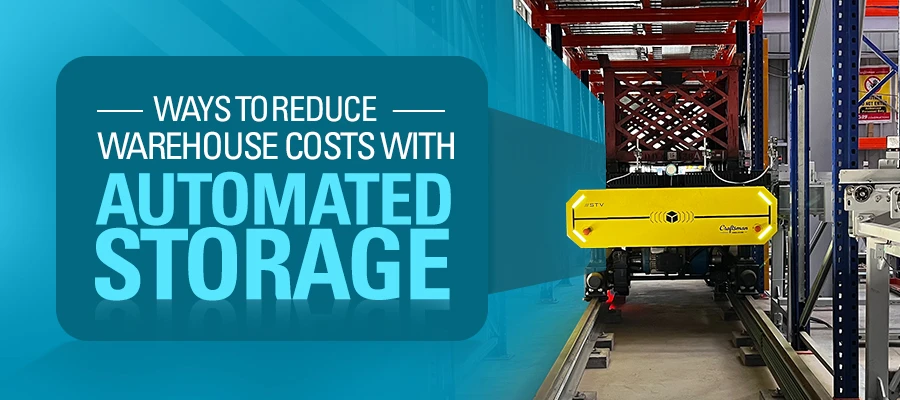Harnessing Efficiency: Warehouse Automation in the Solar Energy Revolution
In today's rapidly advancing world, the solar energy sector stands at the forefront of sustainable innovation.
Read More
A potent solution that has surged to the forefront in recent years is the integration of automated storage systems. By leveraging technological capabilities, warehouses can not only streamline their processes but also realize substantial cost reductions. This blog delves into diverse avenues through which automated storage becomes a transformative force in optimizing costs within warehouse operations.
Automated storage systems, ranging from vertical carousels and AS/RS to mini-load stacker cranes, are intricately designed to capitalize on both vertical and floor space. This strategic use of available space not only enhances operational efficiency but also obviates the necessity for expansive facilities, leading to savings in real estate costs.
A paramount advantage of automated storage is the significant reduction in labor costs. These systems adeptly handle tasks that traditionally demanded manual intervention, such as picking and packing. By automating repetitive and time-consuming processes, warehouses can curtail labor expenses, channeling human resources toward more value-added endeavors such as quality control and exception handling.
Equipped with advanced inventory management software, automated storage systems ensure real-time tracking and accuracy, mitigating errors in inventory management. This precision not only prevents costly issues like stockouts and overstocking but also augments customer satisfaction, fostering potential business growth.
Modern automated storage systems are designed with a keen focus on energy efficiency. Incorporating features like smart lighting and optimized equipment operation, these systems contribute to reduced energy consumption over time, solidifying their standing as a sustainable and cost-effective choice.
Automation accelerates the order fulfillment process, culminating in shorter lead times and heightened customer satisfaction. The expeditious order processing allows for quicker turnaround times, subsequently reducing the need for maintaining large safety stock levels and, consequently, lowering carrying costs for inventory.
Built with precision and durability in mind, automated storage systems minimize the risk of product damage during storage and retrieval. Additionally, scheduled preventive maintenance for automated equipment serves to avoid costly downtime and repairs associated with manual handling equipment.
A distinguishing feature of automated storage systems lies in their high scalability and adaptability to evolving business needs. As warehouse requirements undergo transformation, these systems can be effortlessly modified or expanded, eliminating the need for extensive reconfiguration or additional infrastructure investment. This adaptability ensures long-term cost savings, effectively future-proofing warehouse operations.
Conclusion
In conclusion, the adoption of automated storage systems represents not merely a technological leap but a strategic maneuver to amplify efficiency and curtail warehouse costs. Through optimizing space utilization, reducing labor expenses, enhancing accuracy, and embracing scalability, warehouses can position themselves for sustained success in an increasingly competitive market. The era of cost-effective warehouse management is automated, and the opportune time to invest is now.